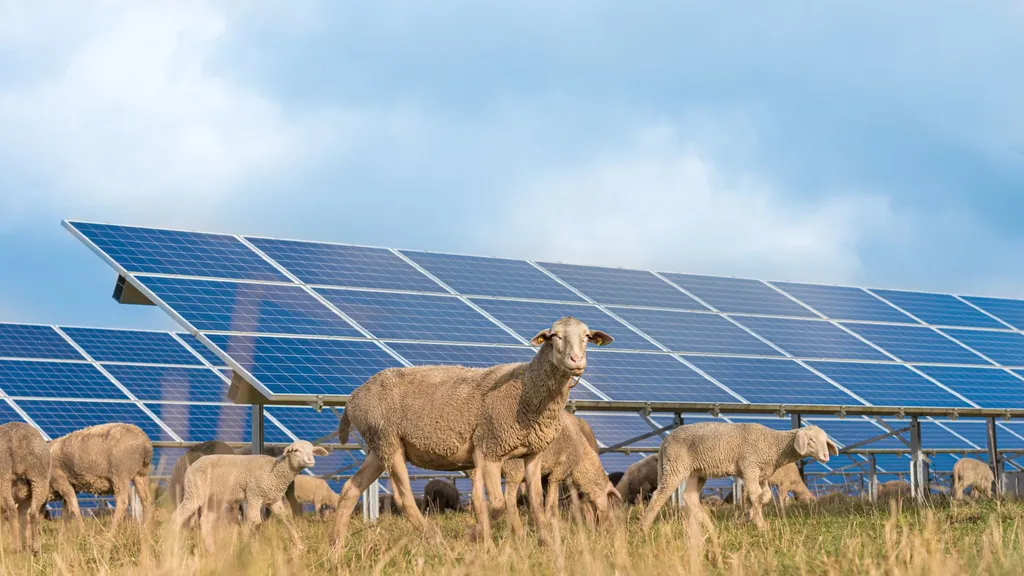In the heart of the northeastern USA, an innovative practice is taking root, quite literally, under the panels of solar farms. Solar grazing, the practice of using sheep to manage vegetation at solar sites, is gaining traction as a sustainable and economically viable alternative to traditional mechanical mowing. A recent study, led by Alyssa C. Andrew of the American Solar Grazing Association in Berkshire, NY, has shed light on the multifaceted benefits of this agrivoltaic approach, potentially reshaping the future of solar energy production and land management.
The study, published in ‘Frontiers in Sustainable Food Systems’ (which translates to ‘Frontiers in Sustainable Agriculture and Food Systems’), collected baseline data from 28 grazed and 3 non-grazed commercial solar sites over three years. The findings reveal that sheep grazing significantly enhances soil health, forage quality, and pasture conditions compared to mechanical mowing. “We found that organic matter, predicted soil protein, and active carbon values were all significantly higher at grazed sites,” Andrew explained. This suggests that solar grazing could play a pivotal role in promoting biodiversity and ecosystem health.
One of the most striking findings was the improved forage quality under solar panels. Forages harvested from areas directly under the panels in 2023 had significantly higher crude protein content and better digestibility than those in open spaces. This not only benefits the sheep but also enhances the overall productivity of the land. “The improved forage quality under the panels was a surprising but welcome finding,” Andrew noted. “It shows that solar grazing can create a symbiotic relationship between solar energy production and agriculture.”
The economic implications of solar grazing are equally compelling. The study emphasized the importance of long-term contracts and site control for graziers, demonstrating that costs can be reduced and become comparable to conventional mowing costs over time. This economic feasibility is a game-changer for the energy sector, offering a cost-effective and sustainable solution for vegetation management.
The study also highlighted that the overall pasture condition score did not change significantly over the study period, indicating that solar grazing maintains stable and healthy pasture conditions. This stability is crucial for the long-term success of solar grazing as a vegetation management strategy.
As the solar energy sector continues to expand, the need for sustainable and efficient vegetation management practices becomes increasingly critical. Solar grazing offers a promising solution that benefits both the energy sector and local agriculture. “This study highlights the potential for solar grazing as a beneficial alternative to mechanical mowing,” Andrew concluded. “It promotes biodiversity, soil health, forage quality, and local production, making it a win-win for everyone involved.”
The findings of this study could shape future developments in the field, encouraging more solar farms to adopt solar grazing practices. As the energy sector seeks to reduce its environmental impact and enhance sustainability, solar grazing presents a viable and innovative approach. The integration of agriculture and solar energy production not only optimizes land use but also fosters a more sustainable and resilient future for both industries.

